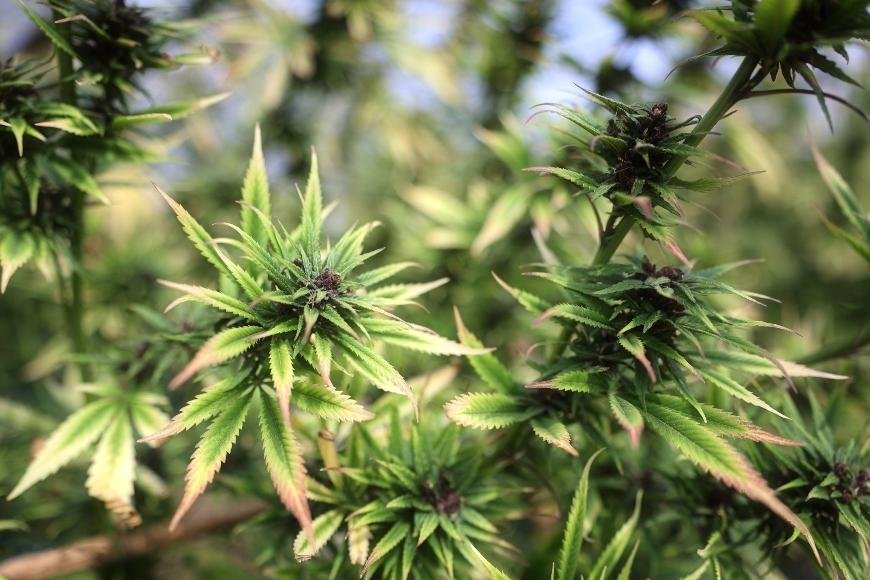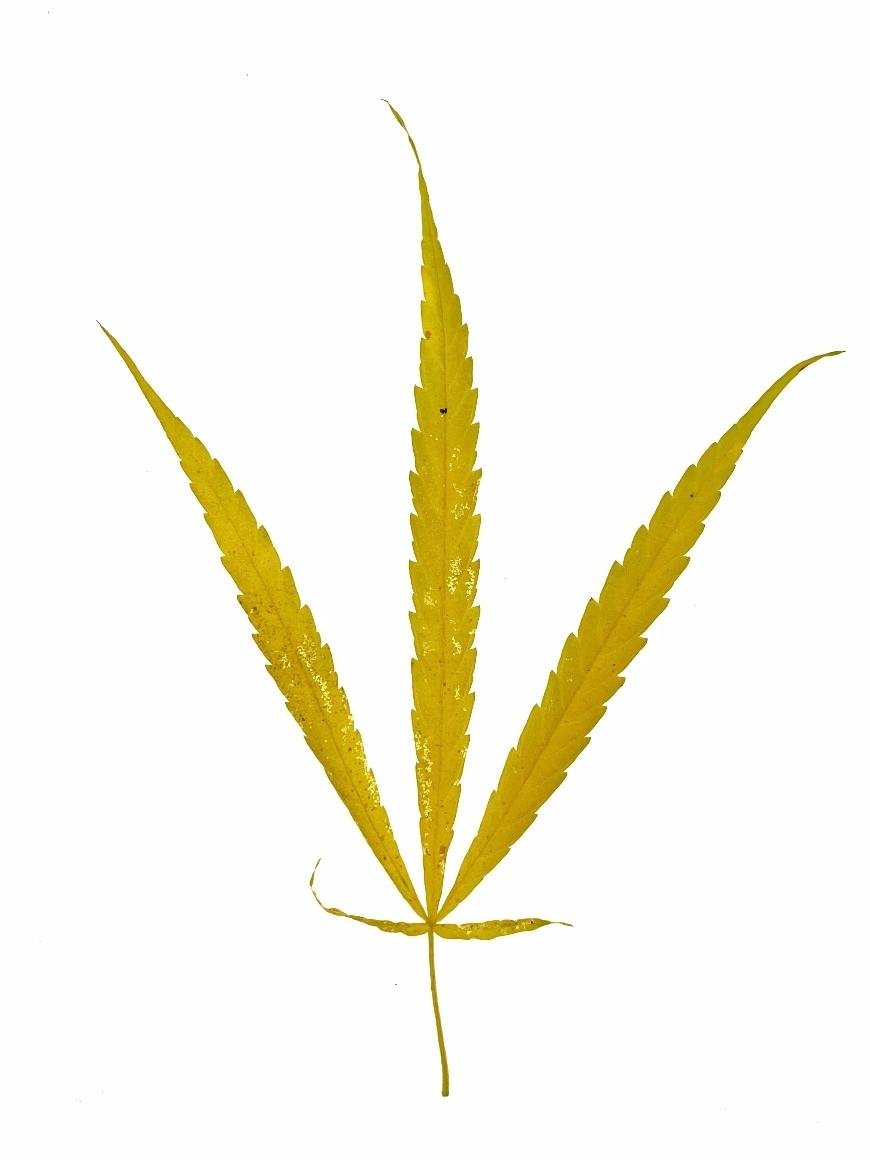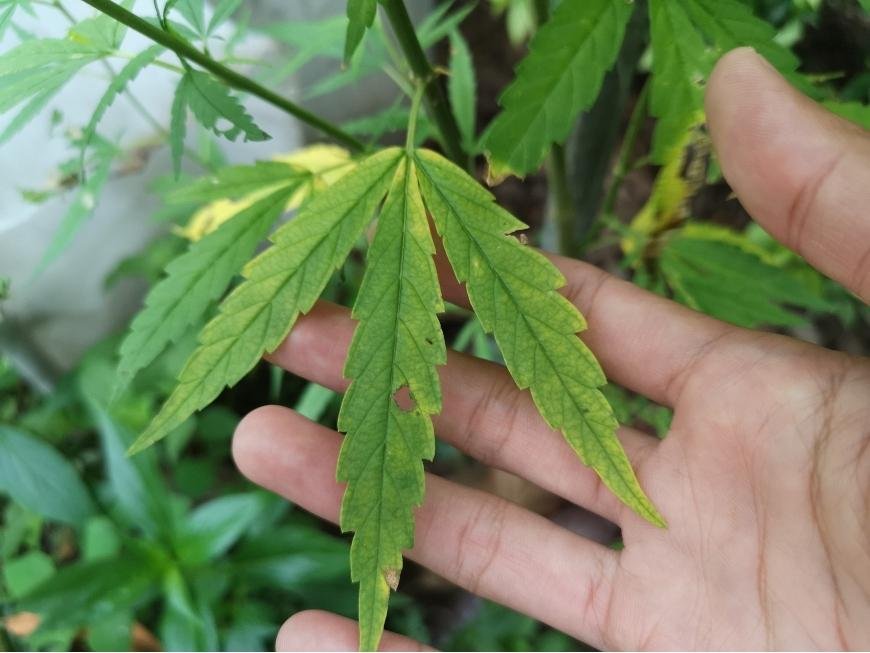How to Fix Copper Deficiency in Cannabis Plants
Discover how to fix copper deficiency in cannabis plants with our expert guide, covering diagnosis, treatment, and prevention for healthier growth.

Understanding how to fix copper deficiency in cannabis plants is crucial for recreational growers seeking optimal plant health and yield. Copper, a key micronutrient, has an essential role in the plant's multiple physiological activities. A deficiency can lead to stunted growth and reduced potency.
In this comprehensive guide, we will delve into identifying the signs of copper deficiency in your cannabis plants, followed by accurate diagnosis methods. Next, we will explore effective treatment options such as applying copper-based fungicides and incorporating copper supplements into nutrient solutions.
Lastly, you'll learn about using organic soil amendments rich in copper and preventative measures to ensure future crops remain free from deficiencies. By mastering how to fix copper deficiency in cannabis plants, you can ensure healthy growth and potent harvests for years to come.
Table of Contents:
- Identifying Copper Deficiency in Cannabis Plants
- Symptoms of Copper Deficiency
- Main Causes Behind Copper Deficiency
- Diagnosing Copper Deficiency
- Applying a Copper-Based Fungicide
- Adding Copper Supplements to Nutrient Solution
- Using Copper-Rich Organic Soil Amendments
- Preventing Future Copper Deficiencies
- Preventing Future Copper Deficiencies
- Conclusion
Identifying Copper Deficiency in Cannabis Plants
Copper is an essential micronutrient for cannabis plants, playing a vital role in various processes such as photosynthesis, energy production, and enzyme activation. A deficiency of copper can lead to several issues that may negatively impact the overall health and yield of your cannabis plants. To help diagnose any copper deficiency issues, we will explore the causes and symptoms of this condition in cannabis plants.
Symptoms of Copper Deficiency
The visible signs of copper deficiency in cannabis plants include:
- Wilting: Affected leaves may appear wilted or droopy even when adequately watered.
- Brown spots: Small brown spots or necrosis may develop on older leaves, eventually spreading to younger foliage if left untreated.
- Twisted leaves: New growth might exhibit twisted or misshapen leaves due to impaired cell development caused by insufficient copper levels.
- Poor root development: Roots may become stunted or underdeveloped as a result of inadequate nutrient uptake from the soil.
Main Causes Behind Copper Deficiency
To effectively address copper deficiency in your cannabis plants, it's crucial first to understand its underlying causes. Some common reasons behind this issue are as follows:
- pH imbalance: An incorrect pH level within the growing medium can prevent proper absorption of nutrients like copper by your plant's roots. For optimal nutrient absorption, maintain a pH range between 6.0 and 6.5 for soil-grown cannabis plants, and 5.5 to 6.0 in hydroponic systems to ensure proper copper uptake by the plant's roots.
- Soil nutrient imbalance: Excessive levels of other nutrients such as zinc or iron can interfere with copper absorption in your cannabis plants, leading to a deficiency even if there is enough copper present in the growing medium.
- Root damage or pests: Damaged roots due to overwatering, disease, or pest infestation can hinder the uptake of essential nutrients like copper from the soil.
Identifying copper deficiency in cannabis plants is an important part of maintaining a healthy crop. Diagnosing copper deficiency in cannabis plants early on can help growers prevent it from becoming a serious issue.

Diagnosing Copper Deficiency
Copper deficiency in cannabis plants can be tricky to diagnose, as the symptoms often resemble other nutrient deficiencies. However, being able to accurately identify copper deficiency is crucial for the health and productivity of your plants. Here are some key signs that may indicate a copper deficiency:
- Wilting: Leaves may begin to wilt and droop, even when adequately watered.
- Brown spots: Dark brown or black spots may appear on leaves, particularly along the edges.
- New growth issues: New leaves might grow twisted or distorted with pale green coloration.
- Necrosis: In severe cases, leaf tips and margins can die off completely (necrosis).
If you suspect your cannabis plant has a copper deficiency, it's essential first to rule out other potential causes of these symptoms such as pH imbalance or overwatering. To do this effectively,
- Analyze your growing medium's pH levels using a reliable soil test kit.
- In case of hydroponic systems check if there is an adequate amount of nutrients in your solution by measuring its electrical conductivity (EC) using an EC meter.
Once you've ruled out other potential causes, it's time to address the copper deficiency directly. Remember that too much of a good thing can be bad, so when treating your plants take it slow.
In addition to visual symptoms, consider conducting a tissue test on your cannabis plant. This laboratory analysis will provide an accurate assessment of the nutrient levels within your plant and help confirm if there is indeed a copper deficiency.
Treating Copper Deficiency
Once you have accurately diagnosed copper deficiency in your cannabis plants, it's time to take action and treat the issue. When deciding how to treat copper deficiency, it is important to select the method that best suits your individual situation. It is crucial to choose the most suitable solution based on your specific growing conditions and preferences.
- Applying a Copper-Based Fungicide: One of the quickest ways to address copper deficiency is by applying a copper-based fungicide. This method not only provides an immediate boost of copper but also helps prevent fungal infections that may be contributing to the problem.
- Adding Copper Supplements to Nutrient Solution: Another effective way of treating copper deficiency is by adding specially formulated copper supplements directly into your nutrient solution. Achieving sufficient levels of this nutrient is possible by introducing the supplement into your nourishment solution.
- Using Copper-Rich Organic Soil Amendments: For those who prefer organic solutions, incorporating copper-rich soil amendments like composted manure or worm castings can help improve overall soil health while addressing the root cause of the deficiency.
No matter which treatment option you choose, it's important to monitor your plants closely for signs of improvement. Keep in mind that it may take some time for the copper levels to return to normal, so be patient and give your plants the care they need during this period.
Remember that treating copper deficiency is only half the battle - you must also address any underlying issues causing the problem in order to prevent future deficiencies. This might involve adjusting pH levels, improving soil quality, or implementing a more balanced nutrient regimen. For more information on maintaining optimal plant health and preventing nutrient deficiencies, check out this comprehensive guide by Grow Weed Easy.
Applying a Copper-Based Fungicide
One effective method to treat copper deficiency in cannabis plants is by applying a copper-based fungicide. These fungicides not only help address the deficiency but also protect your plants from various fungal diseases. However, caution must be taken when applying them and the manufacturer's instructions should be followed closely.
Benefits of Using Copper-Based Fungicides
- Fast-acting: Copper-based fungicides provide quick relief for copper-deficient cannabis plants, as they are easily absorbed through leaves and roots.
- Disease prevention: They offer protection against common fungal infections like powdery mildew and leaf spot, which can severely affect your plant's health.
- Broad-spectrum activity: Most copper-based fungicides have broad-spectrum action against various fungi, bacteria, and even some viruses that may harm your cannabis plants.
Tips for Applying Copper-Based Fungicides Safely
- Select the right product: Choose a high-quality copper-based fungicide specifically designed for treating deficiencies in cannabis or similar plants. Check online reviews or consult local gardening experts for recommendations.
Applying a copper-based fungicide is an effective way to treat and prevent the spread of copper deficiency in cannabis plants. Adding copper supplements to nutrient solution can provide another layer of protection against this common problem.
Adding Copper Supplements to Nutrient Solution
If you've identified a copper deficiency in your cannabis plants, one effective solution is adding copper supplements directly to the nutrient solution. This method ensures that your plants receive an adequate amount of copper for optimal growth and development. However, it's crucial to follow the recommended dosage instructions on the supplement label, as excessive amounts of copper can be toxic to your plants.
Choosing the Right Copper Supplement
There are various types of copper supplements available on the market, including chelated forms like copper EDTA or gluconates. Chelated minerals are more readily absorbed by plant roots compared to non-chelated ones due to their stable structure.
- Copper EDTA: A popular choice among growers because it remains soluble at a wide range of pH levels (1-10).
- Copper Gluconate: Another common option with good solubility and availability for plant uptake.
Dosage Instructions and Precautions
To avoid over-application and potential toxicity issues, always follow manufacturer guidelines when using any type of copper supplement. The ideal concentration varies depending on factors such as plant size, growth stage, and overall health status; however, generally speaking:
- Add approximately 0.1 ppm (parts per million) of supplemental copper for every liter (or quart) of water in your nutrient reservoir.
- Mix thoroughly before applying this enriched solution during regular watering sessions or via hydroponic systems.
Note: It's essential to monitor your plants closely for any signs of improvement or worsening symptoms. If the deficiency persists, re-evaluate your diagnosis and investigate other treatment options.
Monitoring pH Levels
As mentioned earlier, one common cause of copper deficiency is an imbalanced pH level in the growing medium. Therefore, it's crucial to monitor and adjust pH levels regularly when using copper supplements in your nutrient solution:
- Ideal pH range for soil-grown cannabis: 6.0-7.0
- Ideal pH range for hydroponic systems: 5.5-6.5
Maintaining proper pH levels will ensure that all essential nutrients - including copper - are available for plant uptake and utilization.
Adding copper supplements to nutrient solution is a great way to ensure that your cannabis plants have the proper levels of copper they need for optimal growth. To further supplement these efforts, using copper-rich organic soil amendments can help provide additional nutrients and minerals necessary for healthy plant development.

Using Copper-Rich Organic Soil Amendments
If you prefer a more natural approach to treating copper deficiency in your cannabis plants, using copper-rich organic soil amendments is an excellent option. These amendments not only provide the necessary copper but also improve overall soil health and structure. Here are some effective organic sources of copper:
- Seaweed: Seaweed contains trace amounts of copper and other essential nutrients for plant growth. You can either use fresh seaweed or purchase dried seaweed meal to mix into your soil.
- Compost: Composted materials such as leaves, grass clippings, and kitchen scraps often contain small amounts of copper that can help address deficiencies in cannabis plants.
- Copper sulfate crystals: While not strictly organic, these water-soluble crystals can be added sparingly to the soil around your cannabis plants for a quick boost in available copper.
When using any type of amendment, it's crucial to follow recommended application rates and guidelines carefully. Over-application could lead to toxic levels of certain nutrients or imbalances within the soil ecosystem.
Maintaining Proper pH Levels for Optimal Copper Uptake
In addition to adding organic sources of copper directly into the growing medium, maintaining proper pH levels is critical for optimal copper uptake. Cannabis plants thrive in a slightly acidic environment, usually ranging from 6.0 to 6.5 on the pH scale; this helps them absorb copper and other vital nutrients better.
To maintain proper pH levels in your cannabis garden:
- Regularly test the soil or growing medium using a pH meter.
- If necessary, adjust the pH by adding appropriate amendments such as lime (to raise pH) or sulfur (to lower pH).
- Monitor nutrient solution pH when using hydroponic systems and make adjustments as needed.
By ensuring optimal conditions for copper uptake, you can effectively treat existing deficiencies while promoting overall plant health and vigor.
Preventing Future Copper Deficiencies
By taking proactive measures and maintaining a healthy growing environment, you can ensure that your plants thrive without experiencing nutrient imbalances.
Maintain Proper pH Levels
One of the primary reasons for copper deficiency is an imbalance in pH levels. To avoid this issue, regularly monitor and adjust the pH levels of your soil or hydroponic solution. For soil-grown cannabis, keep the pH between 6.0-7.0; for hydroponics systems, a slightly more acidic range of 5.5-6.5 is preferable to prevent copper deficiency due to imbalanced pH levels and nutrient lockout in roots system caused by overfertilization or excessive use of nutrients.
Monitor Soil Nutrient Content
Avoid over-fertilizing or using excessive amounts of nutrients that may cause nutrient lockout by competing with copper uptake in your cannabis plant's roots system (nutrient lockout). Periodically examine your soil or growth medium to guarantee it contains satisfactory amounts of crucial minerals such as iron, zinc, manganese and copper.
- Soil testing: Conduct periodic soil tests, which can help identify any potential mineral deficiencies before they become problematic.
- Nutrient balance: Use balanced fertilizers designed specifically for cannabis cultivation to provide all necessary nutrients without causing imbalances.
- Foliar feeding: Apply foliar sprays containing trace minerals, including copper, to supplement your plant's nutrient intake.
Avoid Root Damage and Pests
Copper uptake can be hindered by root damage or pest infestations. To prevent these issues from affecting your cannabis plants' health, follow these tips:
- Proper watering techniques: Overwatering or underwatering can cause root damage. Learn the appropriate watering techniques for cannabis plants, ensuring that they receive adequate moisture without becoming waterlogged.
- Pest control: Regularly inspect your plants for signs of pests such as aphids, spider mites, and fungus gnats. Implement an effective integrated pest management (IPM) strategy using organic methods like neem oil or introducing beneficial insects like ladybugs into your garden.
- Maintain a clean growing environment: Keep the area around your plants free of debris and weeds to minimize potential hiding spots for pests and pathogens.
Taking proactive steps in maintaining proper pH levels, monitoring soil nutrients content, avoiding root damage and pests will help you prevent future copper deficiencies in cannabis plants. By staying vigilant about potential issues before they become problematic, you'll ensure that your marijuana thrives throughout its entire growth cycle - ultimately resulting in healthier buds with optimal potency.
Preventing Future Copper Deficiencies
By taking proactive measures and maintaining a healthy growing environment, you can ensure your plants thrive without encountering nutrient imbalances.
Maintain Proper pH Levels
One of the main reasons for copper deficiency due to nutrient lockout is an improper pH level in the growing medium. To avoid this issue, regularly check and adjust your soil or hydroponic system's pH levels. For optimal copper absorption, cannabis plants should be grown in slightly acidic soil (6.0-7.0 pH) or hydroponic systems (5.5-6.5 pH).
- Soil: Maintain a pH level between 6.0-7.0.
- Hydroponics: Keep the pH level within the range of 5.5-6.5.
To maintain proper pH levels, use pH-balanced water , as well as appropriate buffers or adjustments when needed.
Avoid Overwatering or Underwatering Your Plants
Cannabis roots need oxygen to absorb nutrients effectively; overwatering can lead to root rot, which inhibits their ability to take up essential elements like copper from the soil properly. On the other hand, underwatered roots may not be able to access enough moisture required for optimal growth. Ensure that you provide the right amount of water to your cannabis plants, allowing the soil to dry slightly between watering sessions.
Use High-Quality Nutrients and Soil
Using high-quality nutrients and soil can help prevent copper deficiency in cannabis plants. Ensure you use a well-balanced nutrient solution containing all essential elements, including trace amounts of copper. Additionally, choose high-quality organic soils , which often contain adequate levels of micronutrients like copper for healthy plant growth.
Monitor Pests and Diseases
Pests such as root aphids or diseases like root rot can damage the roots' ability to absorb copper from the growing medium. Regularly inspect your cannabis plants for signs of pests or diseases, and treat them promptly with appropriate measures if detected.
Avoid Copper Toxicity
While addressing a copper deficiency, it's crucial not to overdo it by adding too much extra copper; this may lead to copper toxicity. Signs of toxicity include leaf tip burn (nutrient burn) or darkening leaves. Always follow recommended dosages when applying chelated copper supplements or other treatments containing copper.
Incorporating these preventive measures into your regular cannabis cultivation routine will help ensure that your plants remain healthy and free from future deficiencies related to inadequate levels of essential nutrients like copper.
Conclusion
By diagnosing the issue early on and using a combination of copper-based fungicides, nutrient supplements, and organic soil amendments, growers can effectively address the problem. It's also important to take preventative measures such as monitoring pH levels and avoiding over-fertilization to avoid future deficiencies.



























































































































